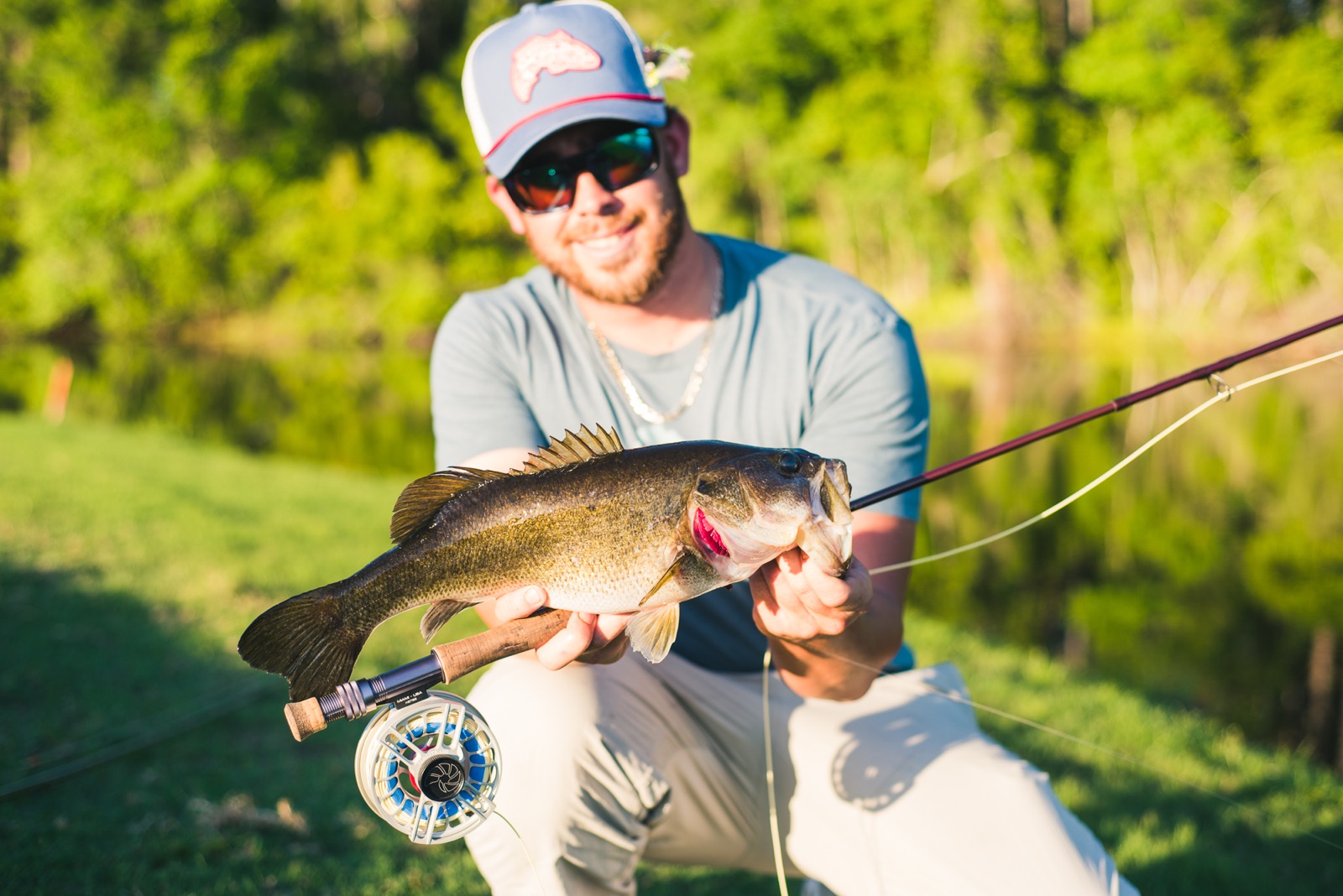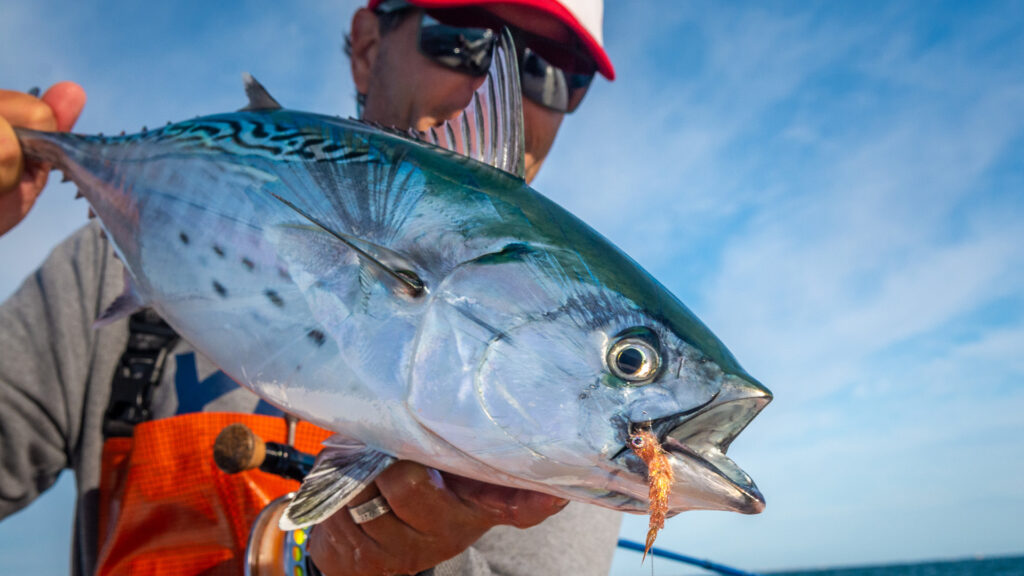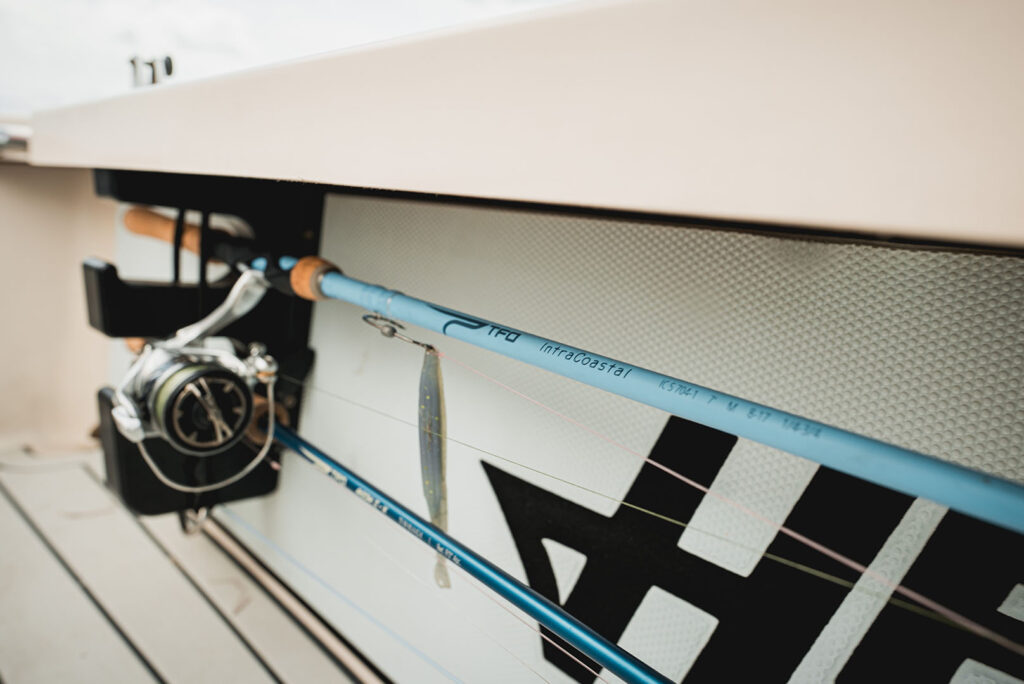Spring has started. It’s time to dust off the fly rod, and there’s no better avenue to break in the new season than by sparring with spawning bass. We caught up with TFO supporter Greg Smith of River Hills Outfitters for a few tips on largemouth on the fly.
Picking the Right Time of Year
“March through May, at least in the (Austin) Texas area. The main thing is the water temperatures, 60-degree plus water. Like all animals, they work off the moon cycles. If the water temp is right and the moon is full, they’ll start the spawn process. If it’s too cold, you’re basically looking at a full month before they decide to do it again. I think they’re looking for the right checklist. If they haven’t reached those parameters, it can be pushed back a month a lot of the time. It’s kind of an interesting thing. They definitely are working on moon cycles.”
What To Look For
“At least in the rivers that I fish, I traditionally look to the sides, with the fallen trees and current on it, the deep edge of the river, but here’s the thing: This is the one time of year to scrap all of that. Don’t cast to the deep structure and deep logs. You want to cast to the shallow gravel, medium shallow, grassy areas. Beds are easy to recognize. They’re clean washed gravel, normally in a perfect circle.”
Understanding the Food Chain and Flies
“If you’re looking to target spawning, or pre spawning fish, it needs to be something that resembles a predator to their eggs — a salamander, a crawfish, a lizard, a leech, anything that looks like that. What they’re doing is killing anything that comes near their eggs. All of those small animals in the river will take advantage and eat those eggs. That’s a whole function of them sitting on that bed and protecting those eggs that they’re so aggressive, they’ll protect their young with their life and put themselves in harm’s way to do so. … Crawfish, lizards, leeches. Even small bluegill and baitfish patterns. Those little things will do the same thing. They will try to eat the eggs. As far as flies, I tie my own stuff. None of it’s named. Everyone has their preference. There’s so much on the market these days. Pat Cohen makes some great crawfish patterns.”
The Right Equipment
“Six to eight weight rod, 10 to 15-pound tippet, 10 to 20-pound really. With the flies, go weedless as possible. By the time of year when you’re fishing, it’s when the grass really starts growing and you’re going to snag on stuff. A heavy trout setup or light redfish setup will work.
“I pretty much use TFO exclusively. I’ve probably got 20 (TFO) rods in my guide quiver. I use the BVKs a lot. I’ve got to spend a lot of quality time with (TFO advisor) Lefty (Kreh) and (I use them) out of homage to him.”
Vary Your Retrieve
“It’s a cat-and-mouse game to get them to eat sometimes. They will chase your fly a lot, but they won’t always eat, hardly ever. There is a reading of the fish and testing things. You definitely have to try a faster retrieve and see if they chase it and show more interest. Try that. If they turn off it, you have to slow it down a little bit. Sometimes you have let it sit still when they’re right up next to it and making it look like it’s going down toward their zone. Sometimes that’s the best thing. You can twitch it instead. Sometimes fishing it slower and giving the fish time to recognize it works. Moving it fast sometimes will get them to chase, but it won’t get a bite.”
Any more tips on fly fishing for bass? Feel free to let us know with a comment or two.






